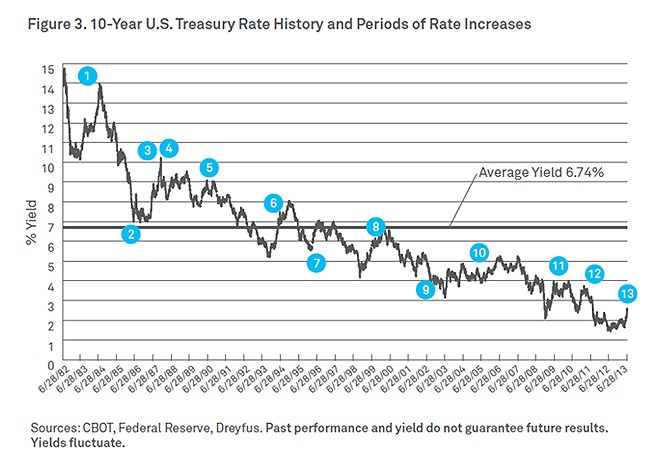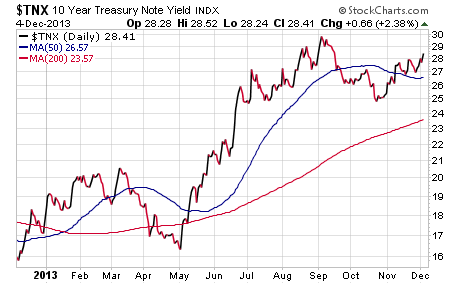How much fixedinterest should your portfolio contain
Post on: 29 Май, 2015 No Comment

Article utilities
Given the chance to start a portfolio afresh, what would your likely asset allocation be?
The perfect investment portfolio will mean different things to people depending on the time frame for investing, the investment objectives and risk tolerance, says Allison Hill, senior consultant with Frontier Asset Consulting.
With a clean slate and a neutral environment investors in a typical balanced superannuation fund could expect to receive returns of 4per cent above the rate of inflation, Hill says.
A suggestion
As a notional starting point, the Frontier recommendation for a balanced super fund with a long- term strategy would roughly be: 54per cent in equities, with a bias towards Australia due to the tax advantages afforded to Australian investors; 20 per cent in alternative investments including infrastructure and private equity; 10 per cent in direct property; and 15 per cent fixed interest and cash.
Mercer data shows the actual average allocation of a balanced fund as being: 34 per cent in Australian shares; 26 per cent in international shares; 6 per cent in property; 10 per cent in Australian fixed interest; 9 per cent in international fixed interest; 8 per cent in cash; and 7 per cent in alternatives.
Know your expectations
The strategic asset allocations recommended by UBS Wealth Management are slightly different again depending on whether an investor is looking for a conservative, moderate or aggressive investment portfolio.
Putting together a model portfolio is all about meeting an investors expectations, says George Boubouras, head of investment strategy and consulting at UBS.
If the expected return from Australian equities is 10 per cent a year then there should also be the expectation that there will a negative return from equities every three years.
Reasons to boost fixed-interest
If you want to reduce the chance of a negative year then you need to look at changing the portfolio to achieve that such as putting more into fixed interest and cash, he says.
Macquarie Private Wealths head of research, Riccardo Briganti, says the starting point for the perfect portfolio is always to understand what your objectives are.
These include what your investment time frame is, your tolerance for volatility, whether you want income or capital growth from the investments, and your need for liquidity.
Conservative investments with less volatility would include fixed interest and cash. High growth might have an emphasis on shares and property.
Reduce volatility
The cash and fixed-income component of an investment portfolio generally represents the more conservative or less volatile portion.
Investment in fixed income is principally about conserving capital and providing income, director of strategy and market development at FIIG Securities Stephen Nash says.
Fixed income generally refers to debt securities that pay a defined distribution for a given period of time and, unless the security is perpetual, repays the face value at maturity.
Issuers of fixed-income securities in Australia include the commonwealth government, state governments, banks and corporations.
Act your age
As a general rule Nash says investors should own their age in bonds. So a 70-year-old would have 70 per cent of their portfolio in fixed-income investments that might include fixed-rate or inflation-linked bonds.

Under this scenario they might hold the other 20 per cent in equities and 10 per cent in property.
A 50-year-old with 50 per cent exposure to fixed interest might have 32 per cent in equities and 18per cent in property.
A 30-year-old with 30 per cent of a portfolio in fixed income might have 47 per cent of a portfolio in equities and 23 per cent in property.
Nash says fixed-interest products offer a range of risk and return characteristics.
Income stream
A fixed-income portfolio can provide a high annual cash-income stream, depending on your risk appetite, without the level of risk and volatility of the higher-risk asset classes such as equities or property, he says.
While some bonds are available on the Australian Securities Exchange, most are available on an over the counter basis.
An alternative may be to invest in different bonds funds.
High risk or low risk?
Nash says it is possible to build a fixed-income portfolio based on an investors appetite for risk. A high risk fixed-income portfolio might have 35 per cent invested in investment grade corporate bonds, 25 per cent in sub-investment grade corporate, 30per cent in inflation linked bonds, 10 per cent in semi-government bonds and 5 per cent in cash.
A low-risk fixed-income portfolio might have 35 per cent in inflation linked semi-government bonds, 25 per cent in investment grade corporate bonds, 25 per cent in semi-government bonds, 10 per cent in inflation linked investment grade bonds and 5 per cent in cash. The higher the risk the higher the expected return, says Nash.














